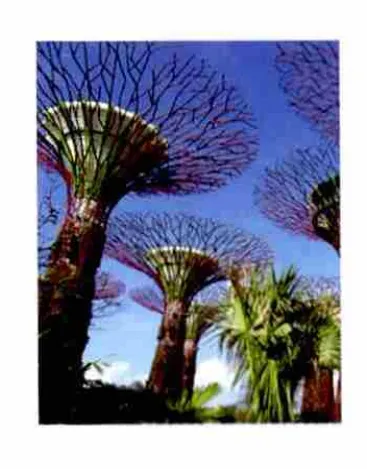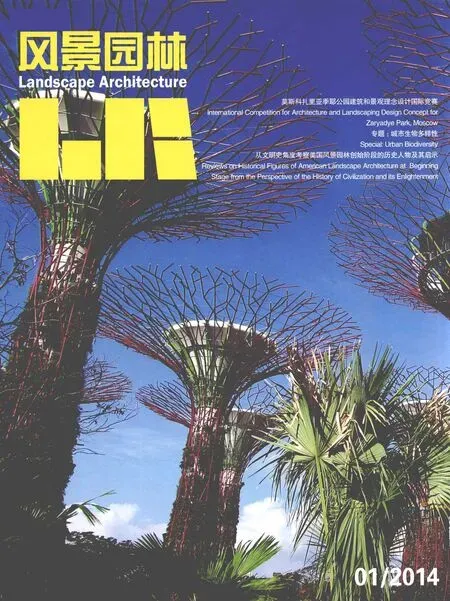刊首语

小时候,我生活的城市自然环境和基础设施都比较差。城市周围是延绵不断的黄土荒山,除了两个公园和一些机关学校外,城市其他地方几乎没有树木。不过城里还有不少充满自然气息的地方。黄河穿城而过,岸边滩涂延绵不断;山前地带有不少水塘;城市几个组团之间是大片的瓜田菜地,除了建筑和道路外,城里的其他土地大多没有被硬化。城市生活虽清贫单调,但也很安逸。孩子们更是快乐,晴日看着蓝天白云,大雁南飞北上,雄鹰盘旋,蜂飞蝶舞,燕子低飞,夜晚数着满天星斗,伴着虫鸣蛙声,听大人们讲野狼豺狐的故事。至于逮蛐蛐捉蚂蚱爬树捉鸟粘蜻蜓抓蝴蝶,则是孩子们乐此不疲的与自然互动的游戏,伴随了每个人的童年。
现在,我的故乡已焕然一新,几乎找不到过去的影子。城中高楼林立,路网纵横,道路两侧有了行道树,周围的荒山变绿了,原来的滩涂、水坑、瓜田和菜地大多已消失,变成了道路和高楼,少数留下来的田野滩涂被改造为人工气息浓厚的公园绿地,种植了许多原来城市中根本没有的花草树木种类。城市富裕了、繁华了,但随之而来的是拥堵的交通、污浊的空气和频繁发生的水土流失与滑坡。除了家养的鸽子和偶见的麻雀,城市里很少见到鸟儿,草地里除了蚂蚁,也少有别的昆虫,不仅雄鹰大雁已成往事,连蟋蟀蚂蚱都成了稀有,城市里最常见的动物只剩下宠物猫和宠物狗。
我所提到的城市在中国绝不是一个孤例。20年间,几乎所有的城市都经历了同样的变化。城市在不断拓展的同时摧毁了大地上曾经丰富多彩的田野、湖泽、森林,在这些土地上生活的多样的生物也随之消失。
我们知道,地球表层是由动物、植物、微生物等所有生物和它们赖以生存的环境组成的一个巨大的生物圈,人类只是其中一员。但自从人类出现以后,尤其是工业革命以来,世界人口不断增加,对生活资料的需要越来越多,对自然资源的攫取越来越没有限度,人类的活动范围不断扩大,对自然环境的干扰也越来越多,其它生物的生存空间不断缩小,并且被人类的活动割裂得支离破碎,生物的种群数量急剧减少,大量物种面临灭绝的危险。有科学家认为,如果物种以目前的速度减少下去,到2050年,四分之一到一半的物种将会灭绝或濒临灭绝。我们正在经历地球历史上的第6次物种大灭绝。与前几次自然因素主导的不同,这一次,人类成为罪魁祸首。
自然环境的退化,使生物失去了进化所需要的环境和条件,物种在不断消亡,却很难有新的物种产生。大量的物种销声匿迹,它们在生态系统中承载的功能也消失了,生态系统的平衡被打破,系统变得非常脆弱,易于崩溃。如果这一趋势不能得到扭转的话,最终将威胁到人类自身的生存,也许我们自己将成为下一个灭绝的物种。
因此,对于生物多样性的保护是一件非常急迫的任务。我们不仅要保护重要的生物栖息地,建立自然保护区和国家公园,而且要在人类的生活环境中为其它生物留出生活的空间和迁徙的通道,让它们在地球上的栖息地能够形成网络,保证物种的延续和进化。人类建造的城市再也不能成为粗暴割裂生物栖息环境的钢筋混凝土荒漠,而是要成为生态网络上的一个节点,在这里人类的文化系统与自然的生态系统能够有机融合,达到一种平衡。这就要求我们在城市建设过程中尊重原有的地形、地貌、水文、植被等自然条件,研究并保留原有的动植物栖息环境,并在此基础上形成网络状的景观系统;以乡土植被群落为蓝本选择城市植物,多保留一些自然群落,发挥自然的能动性,构成真正适合动物栖息的环境;治理河流污染,恢复河流的自然驳岸,为水生动物、两栖动物和鸟类提供栖息地;绿化城市屋顶,为昆虫和鸟类提供可以生活或停留的“空中草原”……这样的城市不仅能满足人类的生活、休闲、审美和获得教育的需要,而且为动物提供了适宜的食物、充足的水源、安全的栖息环境和迁徙的通道,城市的生态环境也会有很大的改善,人类的生活也会更加健康和幸福。
中国现在的城市面临巨大的人口压力和严峻的环境问题,以往的城市规划和建设模式已经让每个人都品尝到了苦果。找到一种环境和经济双赢的城市发展方式是我们的当务之急。在这个历史过程中,风景园林将扮演什么样的角色呢?

PREFACE
Back when I was a child, the city I lived in was poor in natural environment and urban infrastructure. City was surrounded by waves of barren mountains; and there were barely trees except for those in the two parks and some Institutions and schools. However,some natural elements were fortunately gratifying in many places: the Yellow River ran across the city and brought beautiful river shoals alongside the river; plentiful ponds could be found in piedmont, and vegetable farms in between groups in city; lands were merely hardened on roads and buildings. Poor and simple, life was easy and comfortable enough, especially for kids. Interactions with nature were fascinating: wild gooses and eagles could be found now and again in the blue sky; bees and butterflies came and stayed among flowers; nights were filled with shining stars and chorus of frogs and insects… Those were the memories that had planted in everyone's childhood.
Today, my hometown has changed beyond recognition. The city are now filled with clusters of high-rise buildings and complicated road network; street trees are planted and waste mountains has been afforested; river shoals and farms are replaced by roads and buildings, leaving only a few shoals being transformed into an artificial park green space with lots of plant species which are new to the city. Rich and prosperous, life has become difficult and troublesome. Instead of birds and blue skies, what people often meet are traffic jams, polluted air, and frequent incidents of landslide, water loss and soil erosion. Wild gooses and eagles no longer fly in the sky, bees or crickets are nowhere to be found; what's left in the city are pet dogs and cats.
Sadly, this is not the only case in China. In the past 20 years, almost every city in China experienced the same transformation.Cities have been expanding at the cost of the destruction of natural fields, lakes and forest and the extinction of the diverse creatures that live in it.
Let us remind that the epigeosphere is a giant biosphere made up by all living creatures such as animals, plants and microorganism and the environment they survive in, and human beings are only one of them. However, since the existence of human being, especially since the industry revolution, the global population has expanded greatly and therefore the needs for means of livelihood. As the take-out from natural resources becomes limitless and the range of human activity expands, the interruption caused to the nature has increased sharply, resulting in the huge shrink and fragmentation of the living space and the sharp decline in the population quantity of other living creatures. If such decline cannot be controlled in time, according to the scientists, about 1/4 to 1/2 of the species will die out or be endangered by 2050. We are experiencing the 6thmass extinction in earth history, but only that this time the leading cause is not from the nature, but ourselves.
The degradation of nature also takes away the conditions and environment for the evolution of species. The mass extinction of the existing species and the absent of new species have destroyed the balance of the ecological system, leaving it vulnerable and being on the verge of collapse. If such trend cannot be turned over, we human beings may very likely be the next extinct species.
Therefore, it is an urgent and critical mission to protect biodiversity on earth. Protecting wildlife habitats for and creating nature reserves and national parks are not enough; we must also spare sufficient living and migration space in human's living environment for other species, allowing their habitats to form a network and assuring the survival and evolution of their tribes. Cities have to become connections in the ecological network where human culture and ecosystem can be integrated and balanced. To do so, we must, in the process of urban construction, respect for natural conditions such as landforms, hydrology and vegetation, study and preserve existing habitats for animals and plants; and, on this basis, create a landscape system network; select urban plants according to native vegetation community, retain natural communities as many as possible in order to create environment suitable for animals to live in; control river pollutions and recover waterfront revetment to provide habitat for aquatic animals, amphibian and birds; develop urban green roofs to create "sky grasslands" for insects and birds to live or to stay… Such cities not only fulfill the needs of human's life, recreation,aesthetics and education, but also provide sufficient foods and waters, safe habitats and migrant space for animals. In this way, the ecological environment in city will be largely improved, and therefore our life will be happier and healthier.
Cities in China are facing enormous pressure from population and environmental issues. The old urban planning and construction pattern has brought us a bitter end. Finding a development pattern mutually beneficial for the environment and economy is our top priority. In this process of history, what roles should landscape architecture plays?

